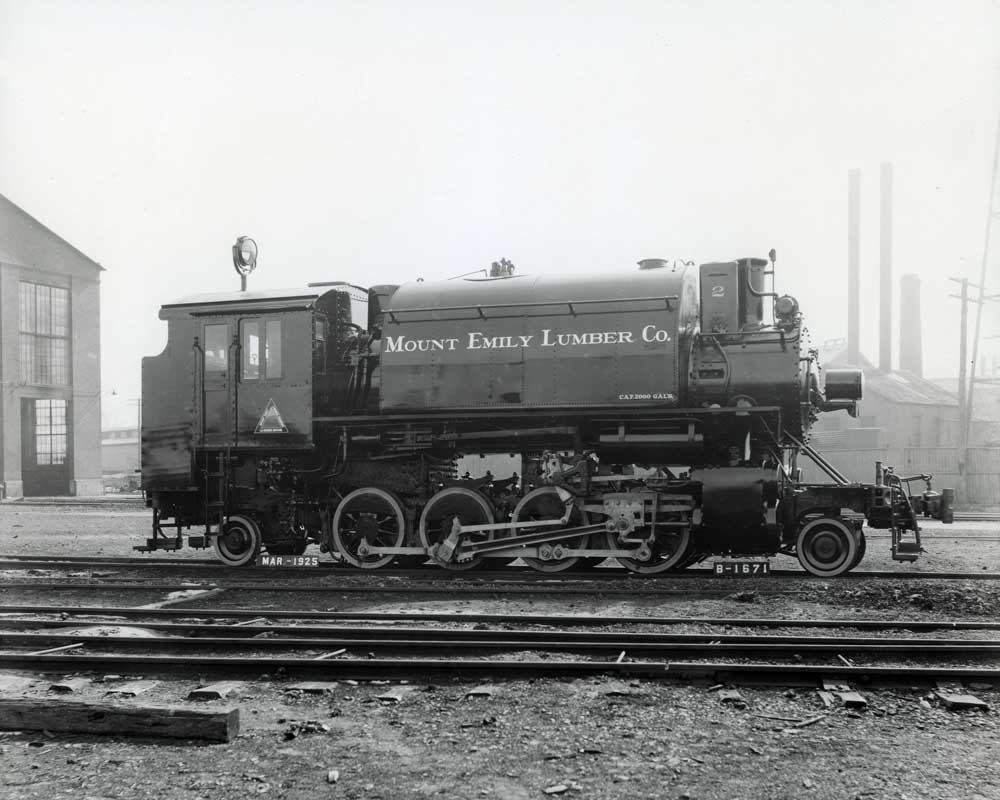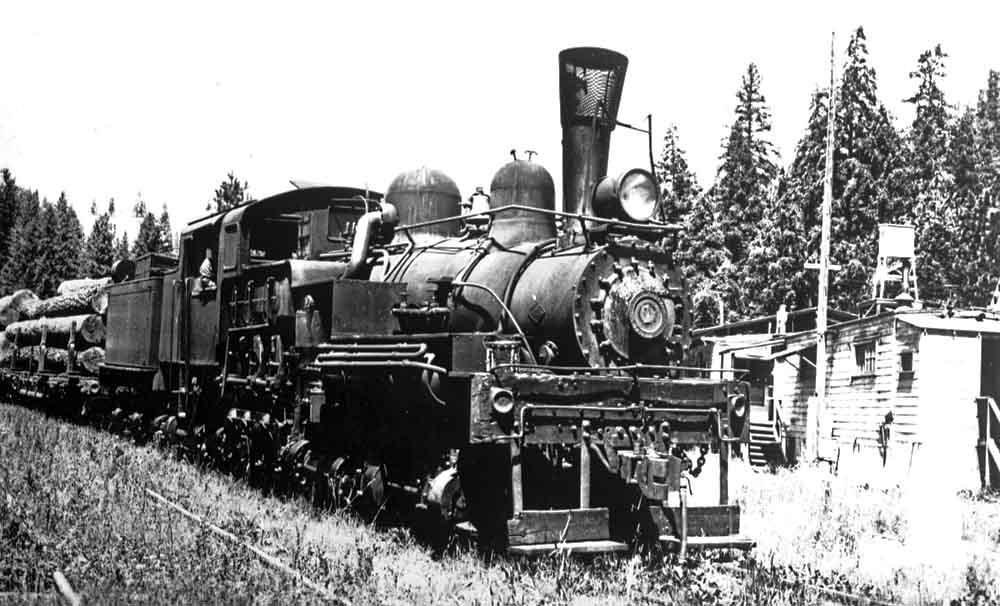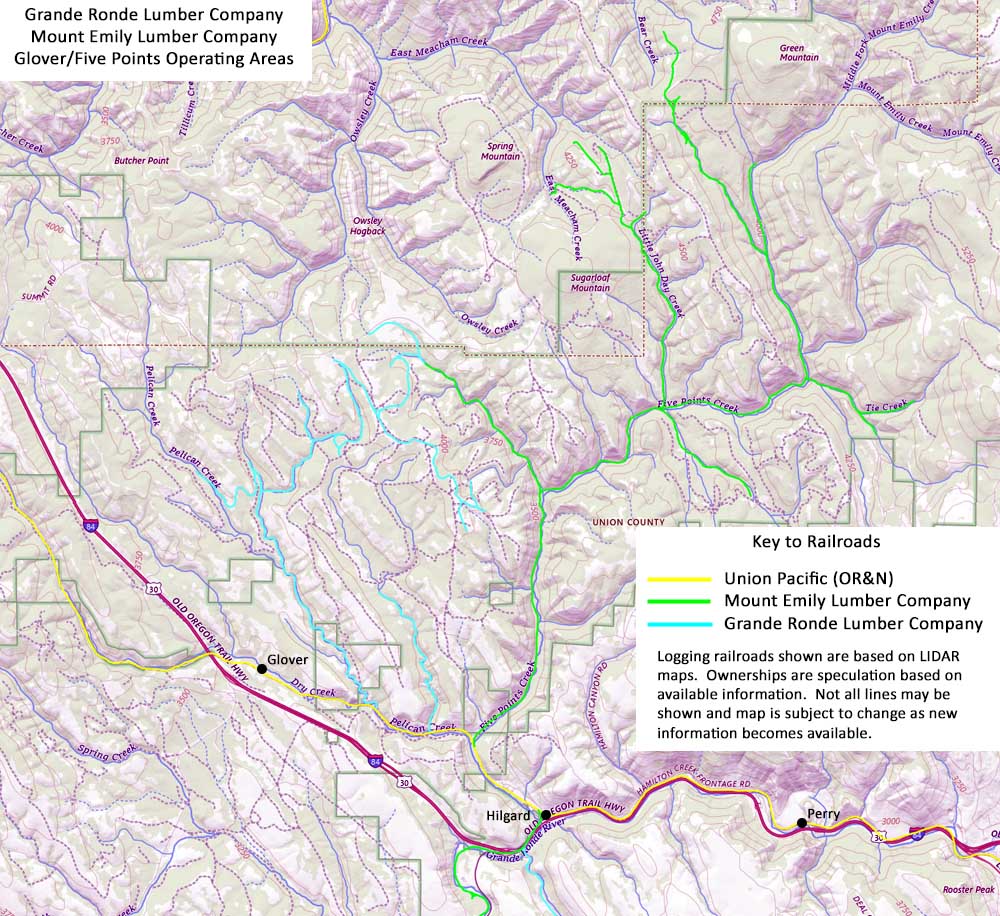|
Mount Emily Lumber Company |
|||||||||||||||
|
|
|||||||||||||||
 |
|||||||||||||||
|
Mt. Emily Lumber letterhead, including the company's logo. |
|||||||||||||||
|
|
|||||||||||||||
History The Strange Family incorporated their Strange Lumber Company in Wisconsin in 1885. The company grew and prospered through the next several decades, but like many other companies from the upper Midwest they started looking for new opportunities elsewhere as the forest reserves in the area dwindled. Around 1911 the company settled on Union County, Oregon, and in 1912 the Strange family incorporated the Mt. Emily Timber Company to acquire and hold timberlands. The company proved adept at negotiating acquisitions, and within two years the company owned over 100,000 acres of land containing an estimated 768,000,000 board feet of merchantable timber. The Timberman reported in June 1912 that "The Mount Emily Timber Co., of La Grande, will some time this season build and operate a small cutting up plant to handle about 7,000,000 feet of lumber, the sash and door stock cut from which will be shipped to their sash and door factory in the East. They will not begin to operate their own timber for several years." A year later the same publication wrote a follow up story stating "August I. Strange of the Mt. Emily Timber Com., states he is handling the output of five small mills which he is shipping to their factory in Wisconsin. Mr. Strange is also the secretary-treasurer of the Union-Wallowa Counties Fire Association, which has accomplished some very satisfactory results in forest fire protection. At a later date a cutting-up plan will be erected." The company finally prepared to move west in 1924, and in that year they formed the Mount Emily Lumber Company to take over the Oregon operations. The new company broke ground in La Grande on what would soon be the then largest pine mill in Eastern Oregon. The company estimated the timberlands it then owned would keep the mill running for 25 years, and enough government timber existed in the area to sustain operations for another 25 years beyond that. Mount Emily decided to commence logging operations in their holdings northwest of La Grande, probably because they would be reliant upon the Oregon-Washington Railroad & Navigation Company to move log cars between the woods and La Grande and the mainline road already had log trains running to the area to support the Grande Ronde Lumber Company operations. By early September 1924 the Security Construction Company had 60 men and several teams working on a contract to build roughly six miles of railroad up Five Points Creek from a connection with the O-WR&N mainline west of Hilgard. Work on all fronts continued into early 1925, which prompted the company to start acquiring the railroad equipment needed to run the logging railroad. The American Locomotive Company, bettern known as Alco, had recently developed an 80-ton, Superheated and Saddle Tank equipped Mikado specifically for the logging industry that, among other features, had a "Lateral Motion Arrangement" applied to the front axle that effectively reduced the rigid wheelbase to one near that of a 2-6-2 Prairie-type locomotive. Alco stated in its marketing materials that they "... have found them to be most successful for combined short main line and all-around logging service on heavy grades and sharp curves." Mount Emily ordered two of the machines for early 1925 delivery. The company also acquired a used 2-truck Shay to work in log spur and switching service in the woods. Other equipment purchases included two Clyde slideback loaders, one moving car, five tank cars, one speeder, and 14 or more camp cars, mostly built on the frames of old Great Northern flatcars and boxcars. |
|||||||||||||||
|
|
|||||||||||||||

The Mount Emily Lumber #2 poses for its Alco builder's photograph in early 1925. Jeff Moore collection. |
|||||||||||||||
|
|
|||||||||||||||
|
The new sawmill in La Grande sawed its first logs on 20 November 1925 and went into full operation on or about 20 January 1926. In
those first years the company employed roughly 250 men in the La Grande sawmill, with another 200-250 loggers working out of two mobile
log camps in the Five Points area. The company almost immediately determined the large 2-8-2Ts to be too much locomotive for their
railroad and by the end of 1925 had replaced one of them with an 80-ton, 3-truck Shay locomotive picked up off the used market. A timber
industry guide published in 1926 showed the Mount Emily company with the following statistics: "Mt. Emily Lumber Co., La Grande; camp post office, Hilgard; daily output 150M; 200 men; donkey engines; machine shop; commissary; electric light plant; air compressors; 2 Clyde loaders; 3 logging tractors; 12 sets spool cars; 50 horses; camp telephone via La Grande; manager L.K. Kinzel; superintendent, Robert Brock; purchasing agent, N.W. Freese; 17 miles s.g. track; 60 lb. rail; 1 rod locomotive; 2 geared locomotives; 75 flat cars; 5 moving cars; 5 tank cars; 1 speeder; maximum grade 7-1/4 per cent; maximum curvature, 30 degrees; locomotive fuel, oil; shovels, 1 gas." Mount Emily bought out the Grande Ronde Lumber Company holdings in the area around late 1926 or early 1927, which likely extended the company's operations in the Five Points area for some period of time. By late 1927 though the company was nearing the end of its timber reserves in that area and started laying plans to move up the Grande Ronde River watershed where the bulk of the company's timberlands lay. The company probably used the roughly nine or so miles of grade running west from Hilgard along the river built and previously used by the Grande Ronde Lumber Company when they logged in the watershed a few years earlier as the start for the new line. The move also coincided with the company trading its remaining Mikado to the Long-Bell Lumber Company for another geared steam locomotive, this time a Willamette. Logging operations shifted to the new line in the spring of 1928, with the initial work focused on the McCoy Creek and Meadowbrook areas. The company initially set up the logging camp at Hilgard but then moved it west, first to a point on the Grande Ronde River near Starkey and then to the McCoy Creek area. By late 1930 the camp moved one last time to a point on Meadow Creek chosen for abundant water supplies from nearby springs. Mount Emily Lumber by this point was rapidly replacing spur line logging railroads with trucks, which allowed the camp to stay in one place. The company was also starting to shift its general focus away from the Grande Ronde River area, especially as it acquired substantial timberlands and sawmills in the Enterprise and Joseph areas northeast of La Grande. |
|||||||||||||||
|
|
|||||||||||||||

Mt. Emily Lumber Company #1 at Camp Starkey on 17 December 1948. John T. Labbe Collection of Logging and
Railroad Photographs, 1892-2010, Washington State Archives, Digital Archives, http://www.digitalarchives.wa.gov. |
|||||||||||||||
|
|
|||||||||||||||
|
In 1945 the company hired Morrison-Knudsen to extend the railroad nearly twenty miles west, crossing into the John
Day River watershed in the process. The new line terminated at a truck to rail reload adjacent to the state highway
a mile or so east of Lehman Springs. The geared locomotives could only haul eight loads at a time from the reload
up the stiff adverse grades to Frog Heaven Summit, where trains would be assembled into 20 car blocks for the all
downhill run from there to Hilgard. Union Pacific continued shuttling the log flats between Hilgard and La Grande,
which was a very popular run amongst the UP crews in as much as they got a full days pay for three hours of work. In 1955 the Valsetz Lumber Company acquired the Mount Emily Lumber Company. The new ownership promptly closed the logging railroad in favor of truck hauls, and the last log train came out of the woods on 20 June 1955. The company scrapped out the railroad shortly afterwards. The Valsetz company deeded the Headquarters Camp on the railroad to the Blue Mountain Conservative Baptist Association, who turned the site into a youth camp named Camp Elkanah using the former camp cars. Some Portland area railfans became aware that one of the geared locomotives used on the railroad at the end was a product of the Willamette Iron & Machine Works of Portland. They opened talks with the Valsetz company about preserving the machine. The Oregon Museum of Science and Industry became involved in the negotiations and soon had an agreement to preserve the locomotive. However, Valsetz forgot to tell their scrapping contractor about the preservation deal before they cut the locomotive up. Valsetz then gave the other remaining locomotive, the 3-truck Shay, to the organization. The Shay bumped around Portland for fifteen years before being leased to the Cass Scenic Railroad in West Virginia. In 1994 the locomotive came back to Oregon. The City of Prineville Railway won the right to host the locomotive, and it operated there until 1 Seotember 2022, when the Oregon Historical Society conveyed the locomotive to the Oregon Rail Heritage Foundation, which moved the locomotive in 2024 to the Oregon Rail Heritage Center in Portland, Oregon, for display and return to operation.
|
|
Maps 
Map of the Grande Ronde and Mount Emily operations in the Five Points and Glover areas. Untangling what each company had in this area is not easy as no
definitive resources splitting out what each operation had and how they interacted are known to survive, so a great deal of speculation is involved on this map.
Special thanks to J.B. Bane and Brian Fosback for help with these maps.
|
The Mount Emily Lumber Company logging railroad mainline and identified spurs. Map is based on available historical maps and LIDAR imagery.
|
Locomotive roster Underlined numbers indicate a link to a page of pictures of that locomotive. 1st #1- Alco 2-8-2T, c/n 66276, blt 3/1925. Cylinders 18x24, Drivers 44", Weight 84 tons, Tractive Effort 28,500 lbs. Purchased new. To Long Bell Lumber Company #805, Longview, OR; transferred to Vaughn, OR by 1952. 2nd #1- Lima 3-truck Shay, c/n 3233, built 9/1923. Cylinders 13x15, Drivers 36", Weight 90 tons, Tractive Effort 35,100 lbs. Built as Independence Logging Company #1, Independence, WA; to Mt. Emily Lumber by 11/20/1925. Donated to Oregon Museum of Science and Industry 1955; to Oregon Historical Society 1960. Leased to and operated by Cass Scenic Railway, Cass, West Virginia 1970-1994, then returned to Oregon. Operated in occassional excursion service on the City of Prineville Railway 1994-2022. Conveyed 1 September 2022 to Oregon Rail Heritage Foundation moved 2024 to Oregon Rail Heritage Center, Portland, Oregon. #2- Alco 2-8-2T, c/n 6627?, blt 3/1925. Cylinders 18x24, Drivers 44", Weight 84 tons, Tractive Effort 28,500 lbs. Purchased new. To Long Bell Lumber Company #804, Longview, OR; to Harbor Plywood Co. #804, National, WA; to Harbor Plywood #804, Amboy, WA. Scrapped by 1959. #4- Willamette 3-truck, c/n 15, blt 6/1924. Cylinders 12x15, Drivers 36", Weight 87 tons, Tractive Effort 31,968 lbs. Built as Long Bell Lumber Co. #700, Longview, WA; to Mt. Emily #4 1927. Donated to Oregon Museum of Science & Industry 1955, but accidently scrapped before it could be delivered. #5- Lima 2 truck Shay, c/n 2614, Blt 1/1913. Cylinders 11x12, Drivers 32", Weight 50 tons, Tractive Effort 22,580 lbs. Built as Deep River Logging Company 2nd #5, Deep River, WA; to Zimmerman-Wells-Brown Corp; to Mt. Emily Lumber #5 1925. To Willamette Iron & Steel #5 9/1942. Scrapped after World War 2.
|
Mt. Emily Lumber Company Camp Cars In July 1925 Mt. Emily Lumber Company constructed at least 14 camp cars on the frames of the flatcars and boxcars purchased from Great Northern. Several of these cars, plus 12 skid shacks and some other buildings, are still in use at Camp Elkanah. After abandonment four or five others were trucked to Ukiah, Oregon, for use as housing until demolished in the middle 1990s. The following two pages are links to the cars and other buildings at the Camp and Ukiah. Camp Elkanah Camp Cars at High Desert Museum Mt. Emily Cars in Ukiah
|
Other Equipment Speeders Gibson B4-25, purchased new February 1935. Sold to Valley & Siletz Railroad #99, Independence, Oregon; to Dick Simpson, Portland, Oregon. 18-man speeder, unknown builder or origin, sold 8/1955 to Oregon & Northwestern. Steam Donkeys Clyde Iron Works, c/n 6049 and 7166, 8.25x10 Cylinders, Rapid Loader Winches. Both shipped 12 August 1925.
|
|
Modern Views of the Mt. Emily Lumber Grade
|
|
References "Mount Emily Lumber Company" by John A. Taubeneck, Winter 2000 Tall Timber Short Lines: pgs 12-21.
|
|
|